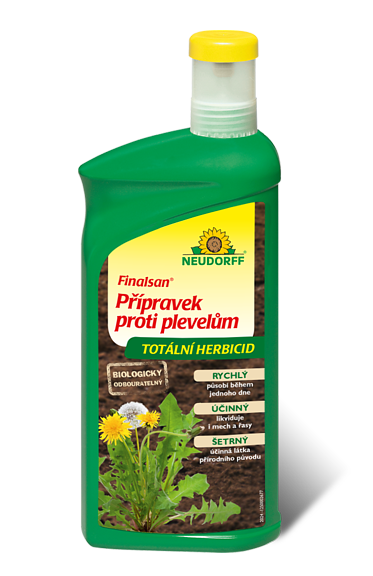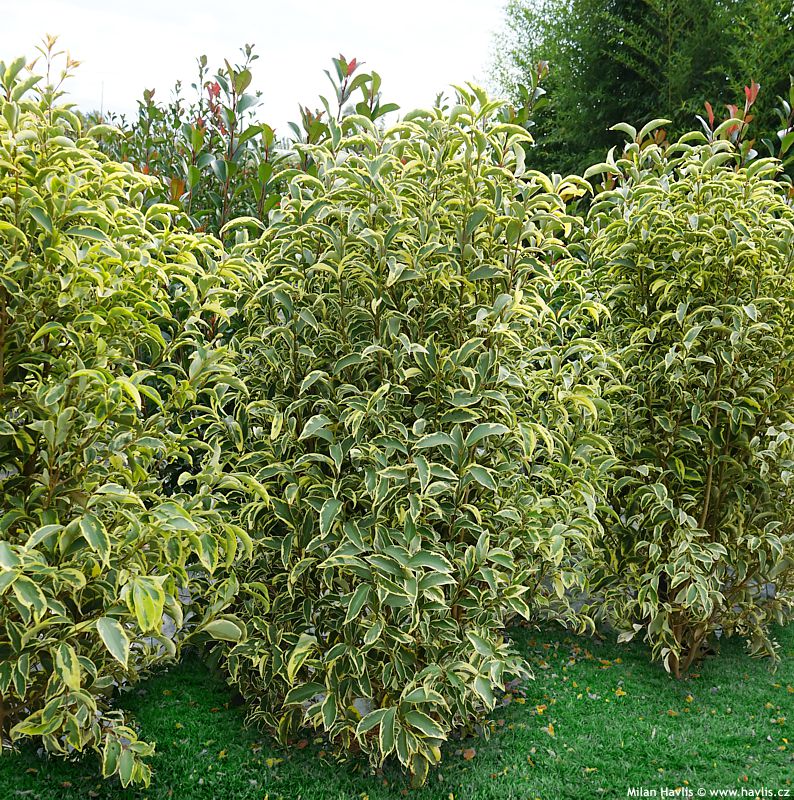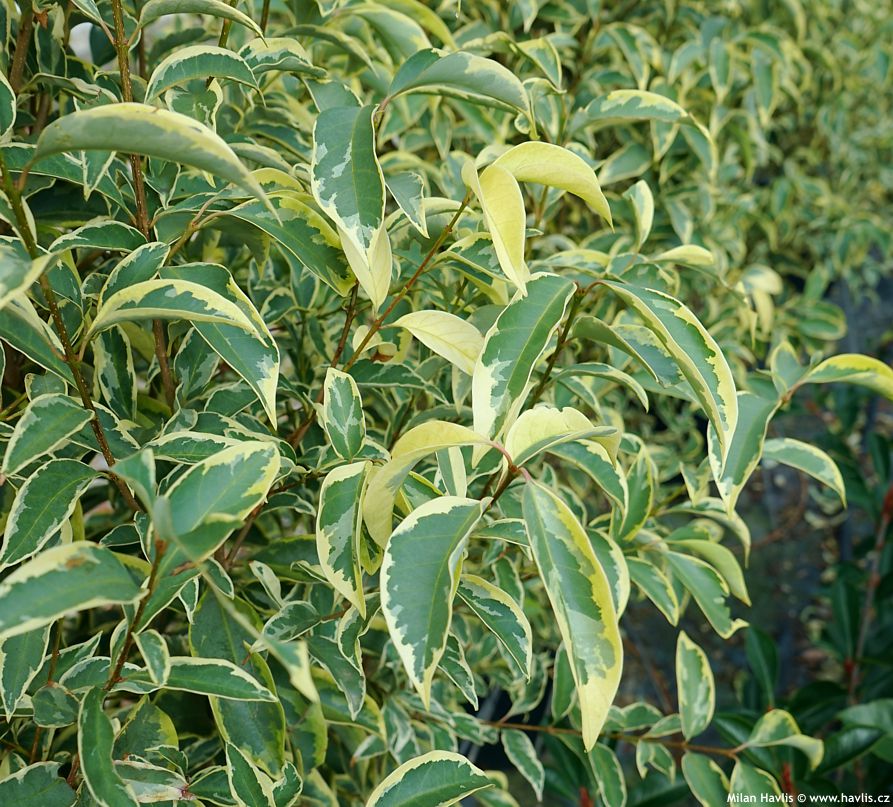Ligustrum lucidum 'EXCELSUM SUPERBUM' Chinese privet, glossy privet
Ligustrum
Privets are deciduous, semi-evergreen, or evergreen shrubs from all continents but America. They are commonly fast growing and dense which makes them ideal for screening and hedging. However, there are a few exceptionally beautiful species or varieties which deserve to be planted as specimens. Chinese privet, also called glossy privet is a Chinese version of Japanese privet and honestly these two guys are difficult to differentiate at the first sight. Its native habitat is a large area from China to Korea and Japan. It belongs to the Oleaceae family which I have been eagerly studying for many years now, testing its species as they prove to be hardier than what was originally suggested.
Excelsum Superbum is a highly attractive, variegated form of glossy privet. It makes large, up to 15 cm long and 6 cm wide, ovate to oval, pale dark green leaves abundantly variegated butter yellow, often extended to the midribs. Directly contradicting its botanical name they are NOT glossy, they are rather matte. In late summer may appear numerous lilac-like panicles composed of small, creamy white, narrowly funnel-shaped flowers which may be followed by typical privet berries of blue-black colour. They are poisonous but in C.E. climate this privet needs age to bloom and when it does it is late in the season and seldom sets fruits.
It grows fast into an upright, oval to pyramidal, very dense shrub reaching about 4-5m unpruned in C.E. climate and up to twice as much in zones 8 and 9 in locations with unlimited root space. Yet its size is commonly controlled by regular pruning and shearing, best done in late winter after all frosts. Light trimming is recommended in midsummer.
Evergreen privets will grow in virtually and free-draining soil but thrive in rich, acidic to neutral soil. Avoid waterlogging. Once established it withstands long periods of drought. Grow it in full sun only, green-leaved species and varieties cope with light shade, too. So far it has proved hardy to -17 °C (USDA zone 7) if properly mulched and further trials continue. After harsh winters it may shed some foliage but new leaves will quickly re-emerge in spring.
Last update 01-02-2023

305,15 Kč

845,75 Kč
Goods are shipped all over Europe. For Russia and U.K. and for further details please read about SHIPPING OPTIONS HERE.
Are you interested in a serious discount for orders NOV-FEB? Check your options here.
THE PRICES INCLUDE VAT of 15%. For quick conversion you can use 1 CZK = approx. 0.04 EUR
- STANDARD QUALITY - Plants of this group are 1st class quality with number of branches and overall density adequate to their size and age, considering they were container grown.
- DE LUXE QUALITY - This label guarantees a luxurious quality of manually selected plants that, compared to their height and age, are exceptionally dense and beautiful.
- EXTRA - These plants are usually mature and bigger specimens with exceptional overall appearance.
- STANDARD (as described in the plant form) means a tree with a trunk of 190-210 cm and a crown at the top, unless specified differently. The commercial size for trees is their girth measured in the height of 1m from ground.
- HOBBY - These plants are of the same quality as our standard-quality plants but younger and therefore cheaper.
- SHRUB - a woody plant with branches growing bushy from the ground level.
- HALF-STANDARD or MINI-STANDARD - a small tree with shorter trunk, its size is usually specified.
- FEATHERED - These are trees with branches growing already from the base of the trunk and up along the stem.
- GRASSES and PERENNIALS - Sizes given usually read the diameter of the pot or the clump, as specified.










































